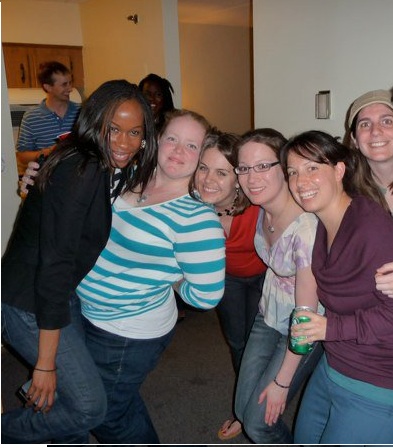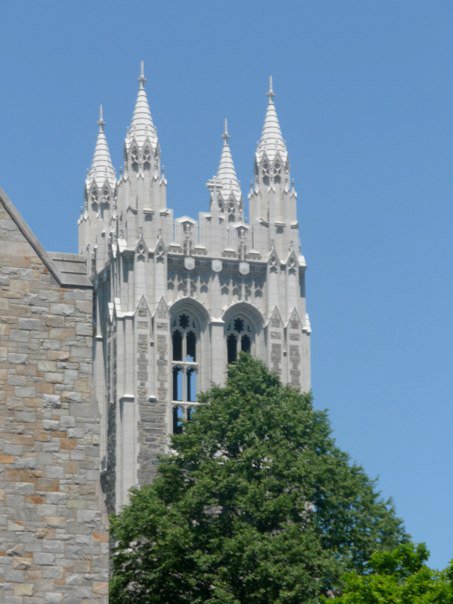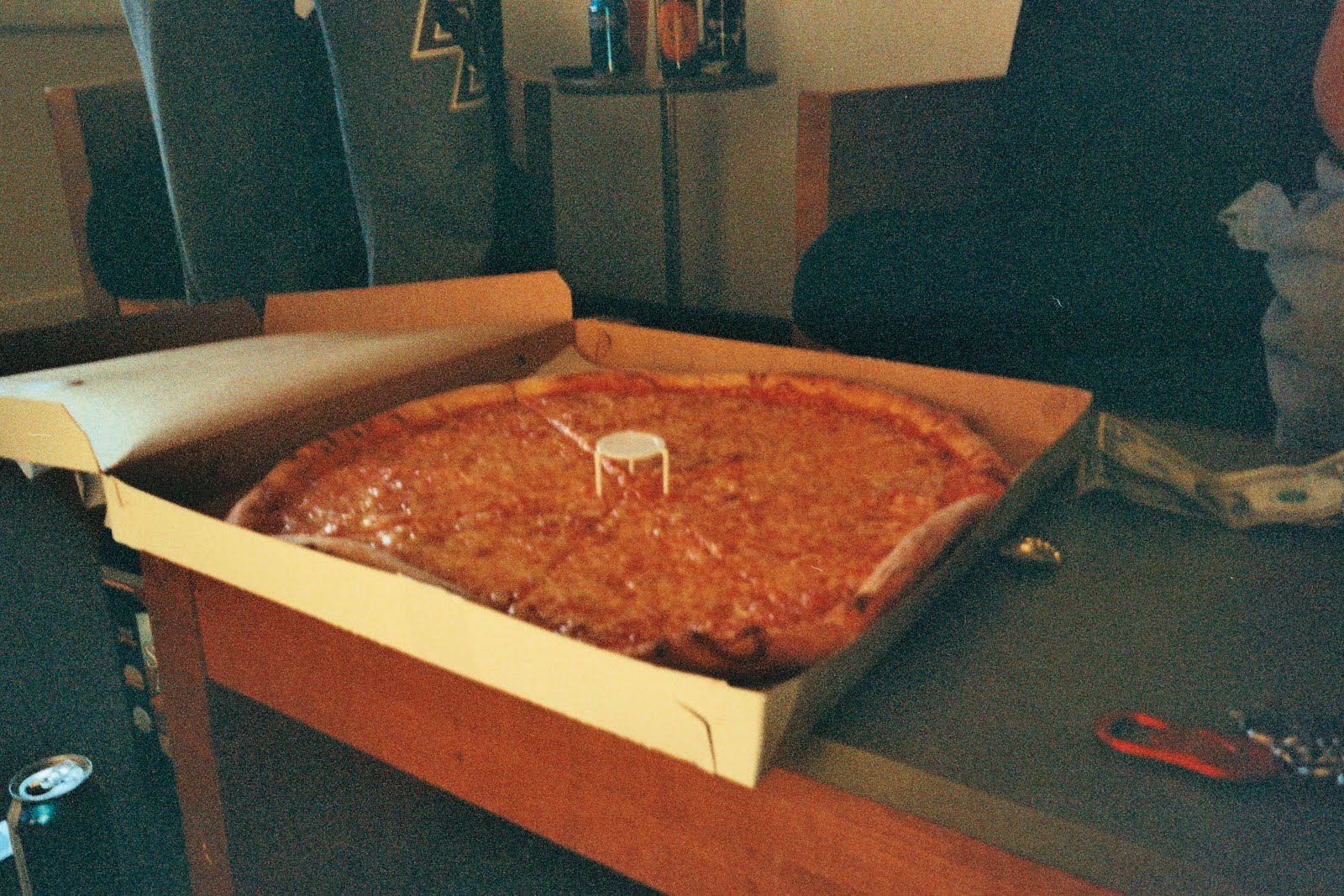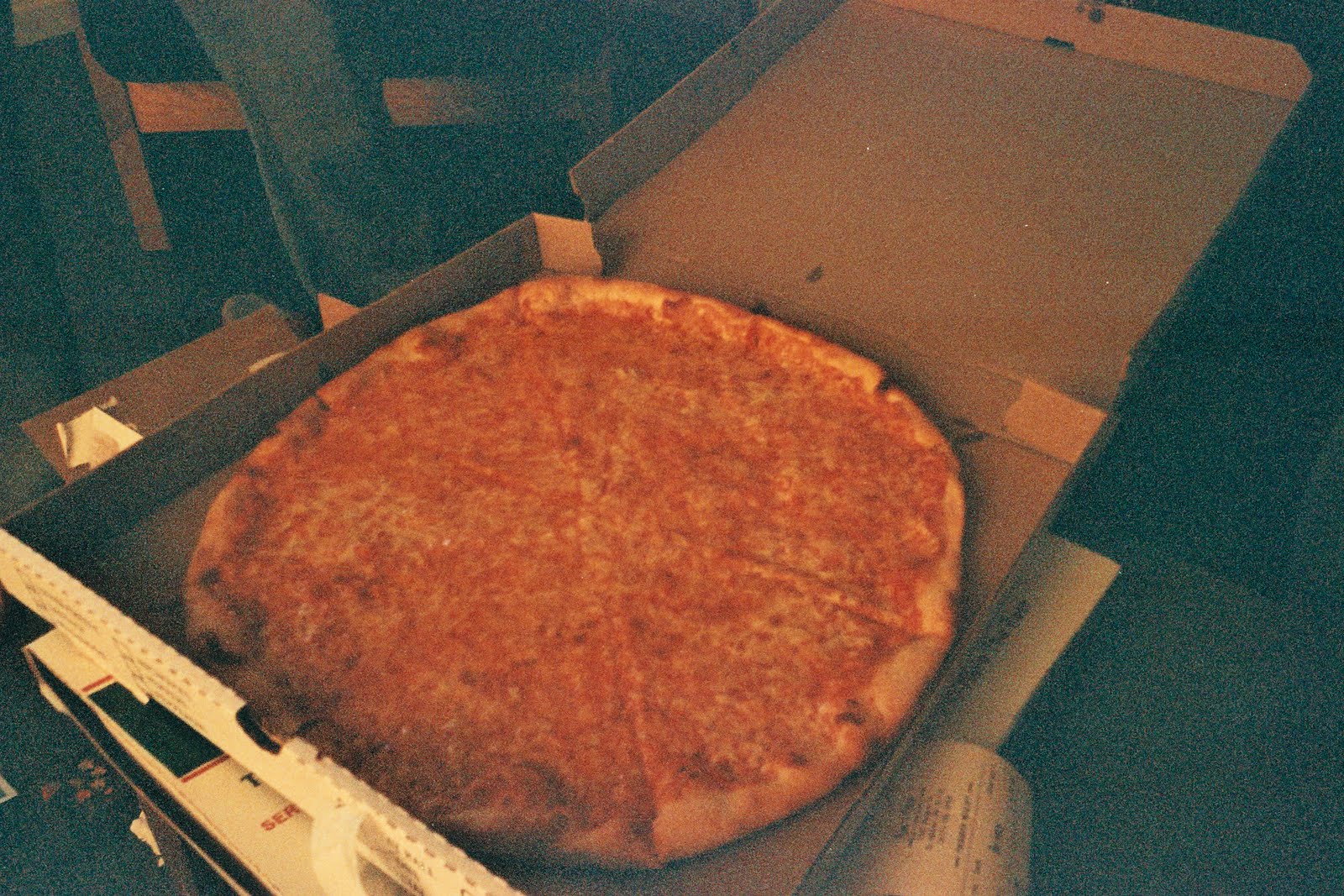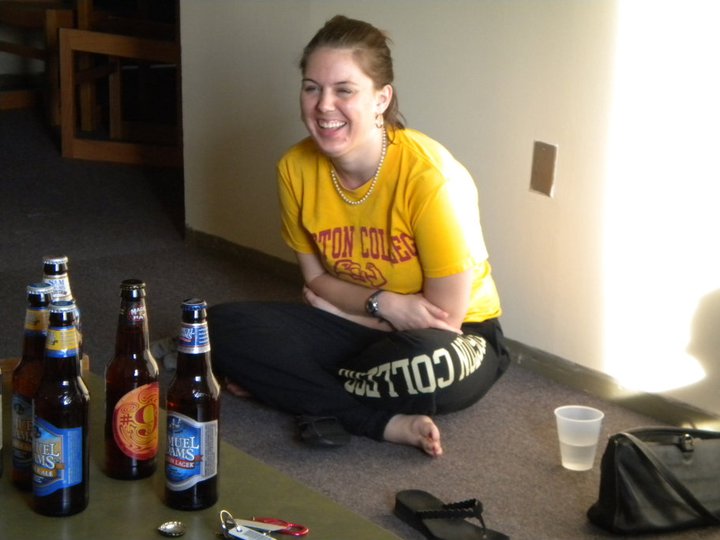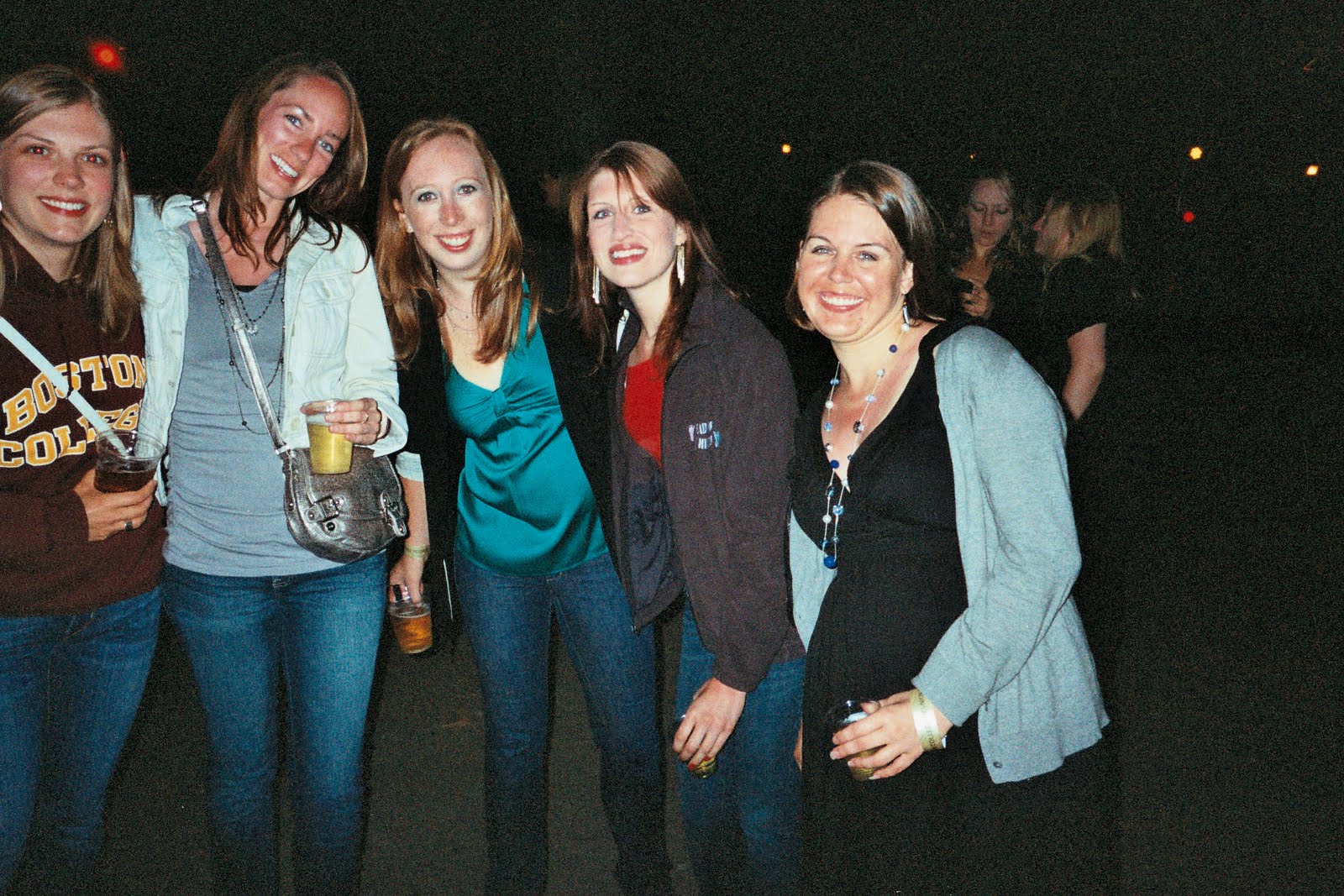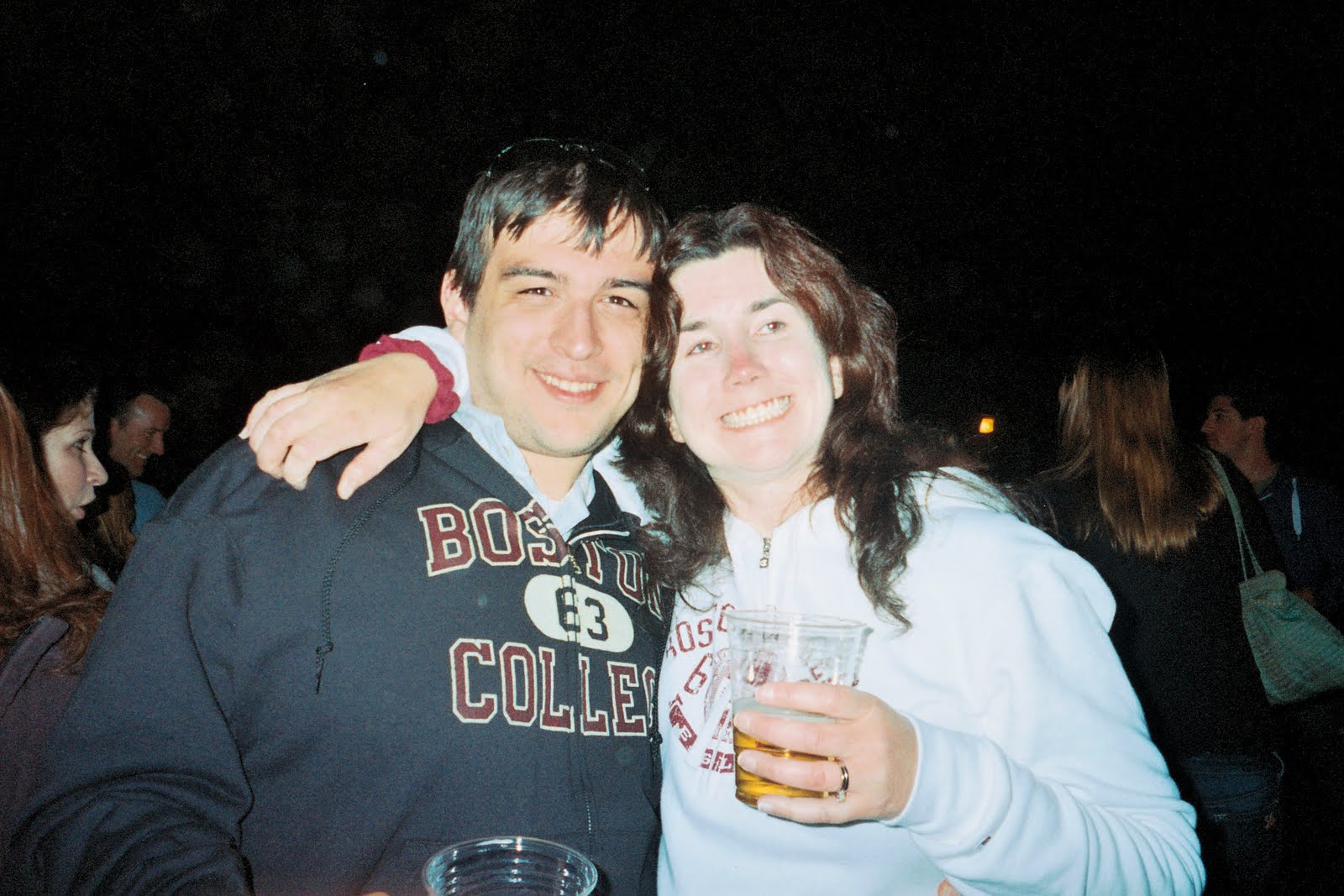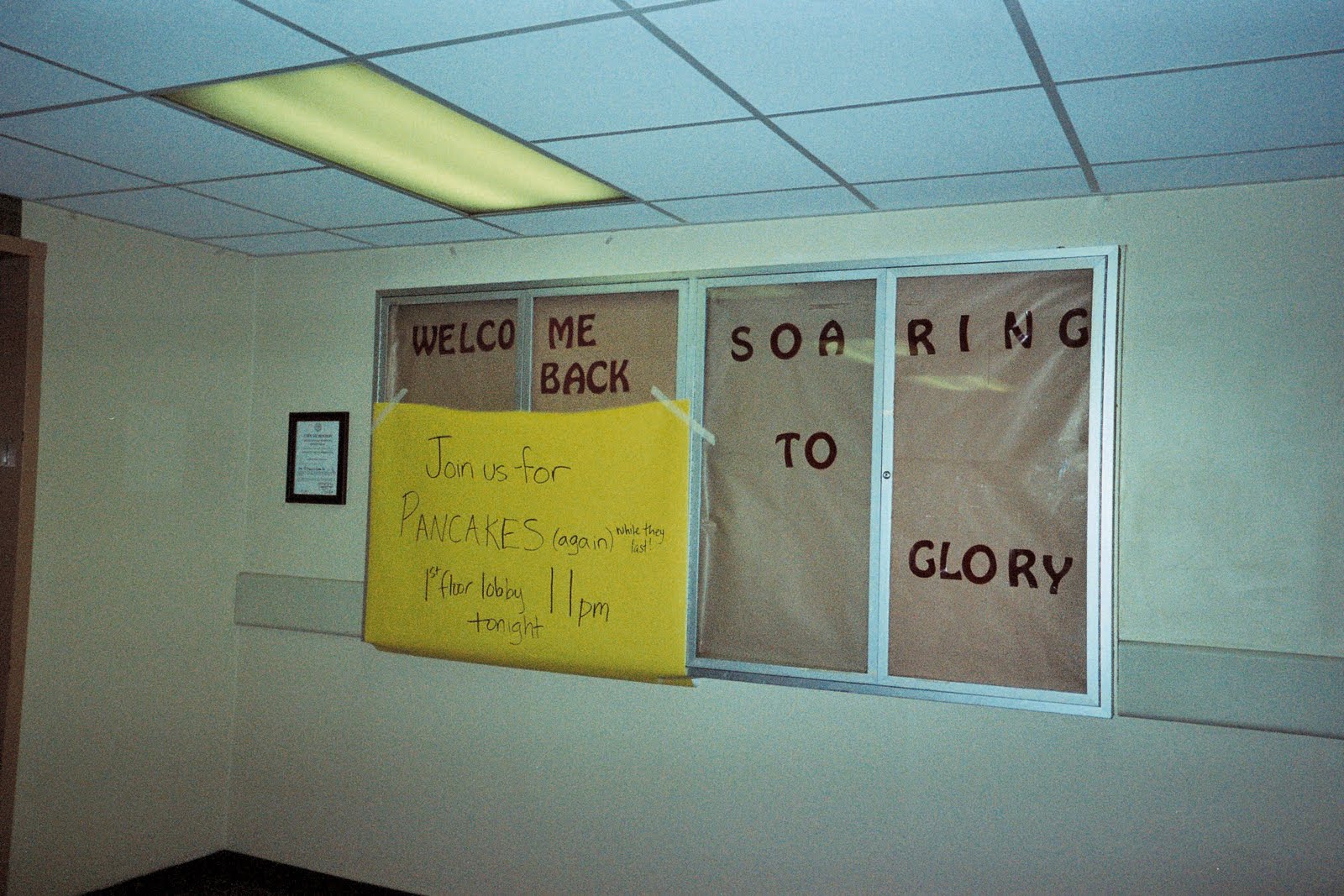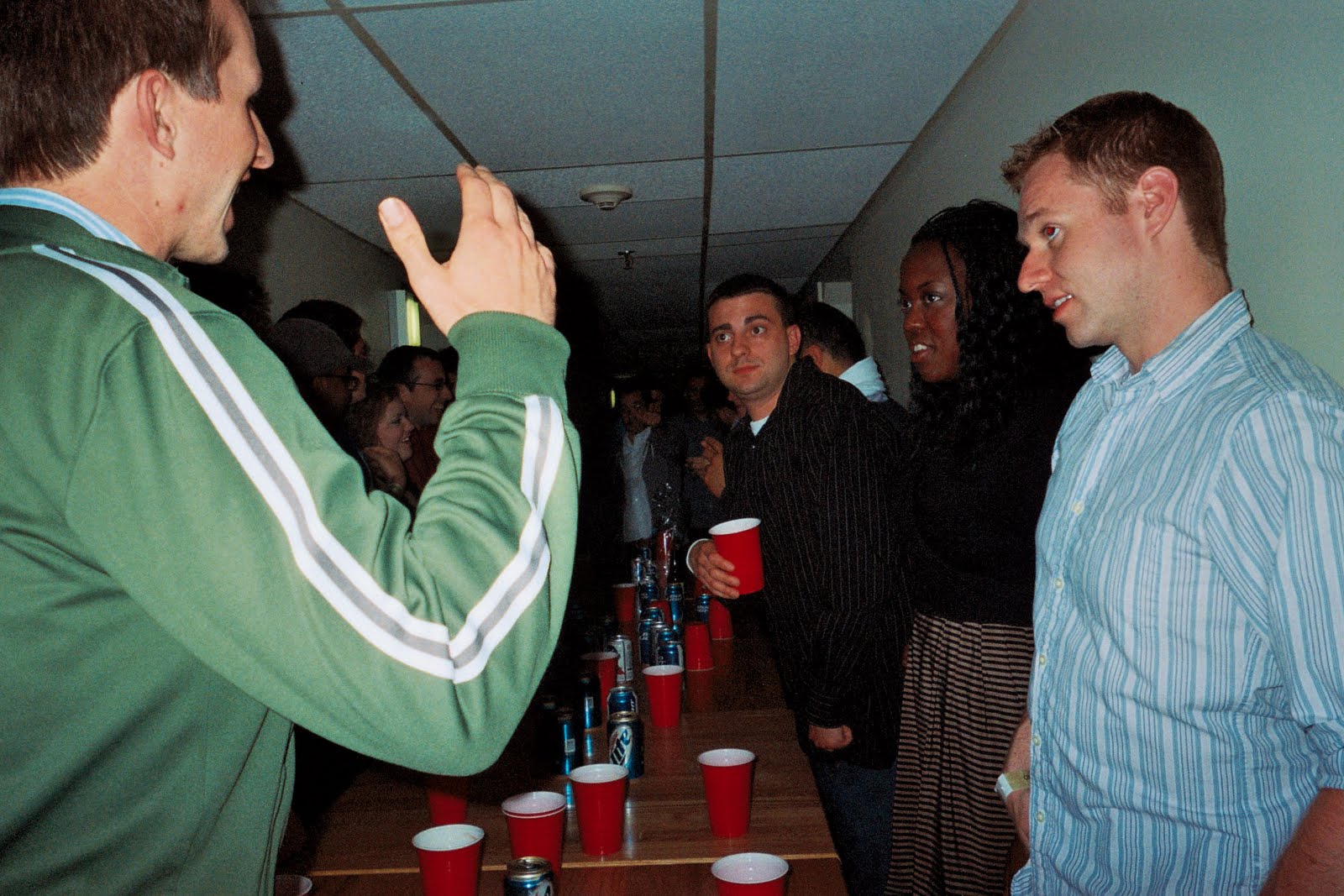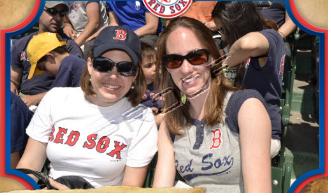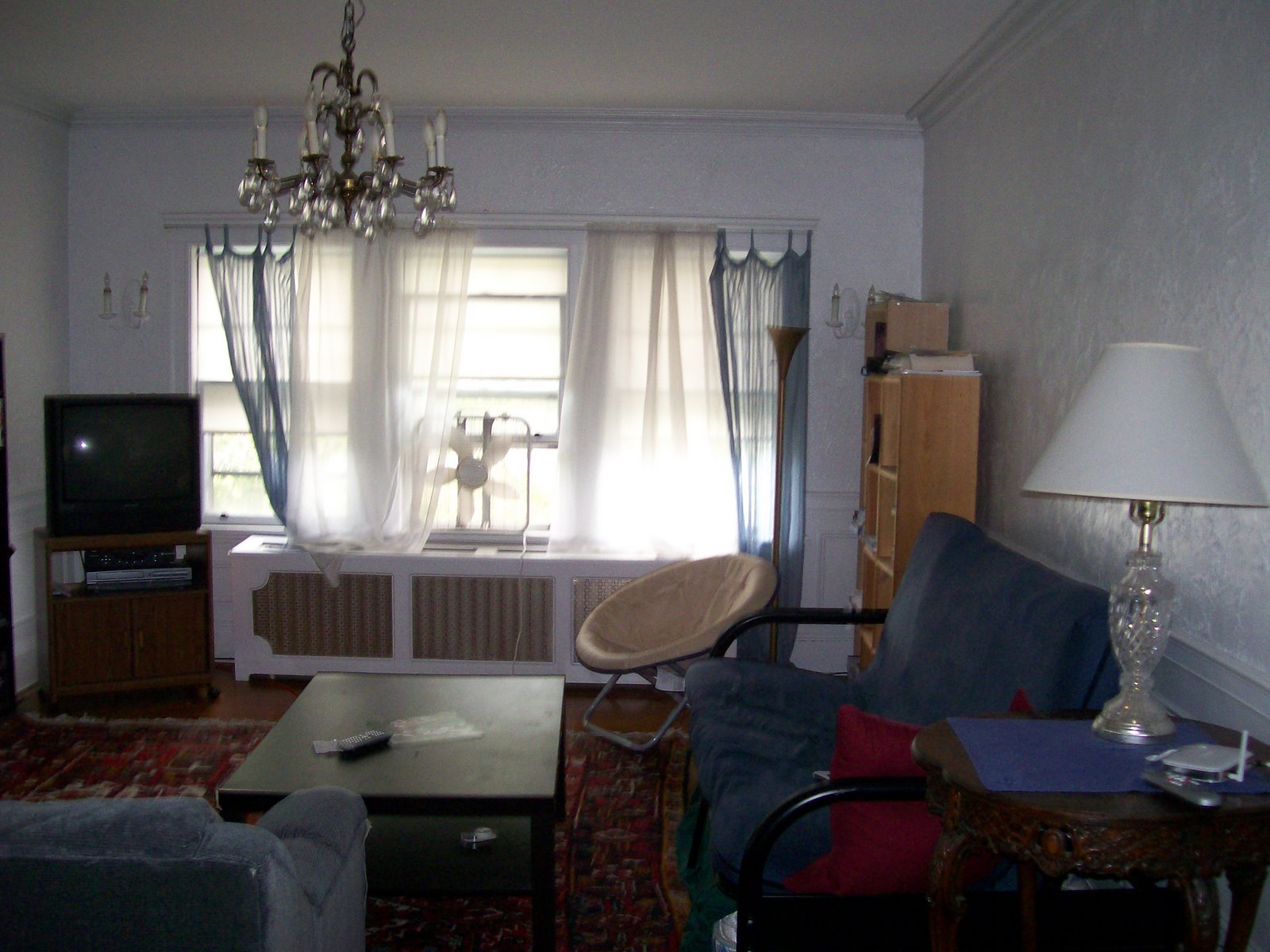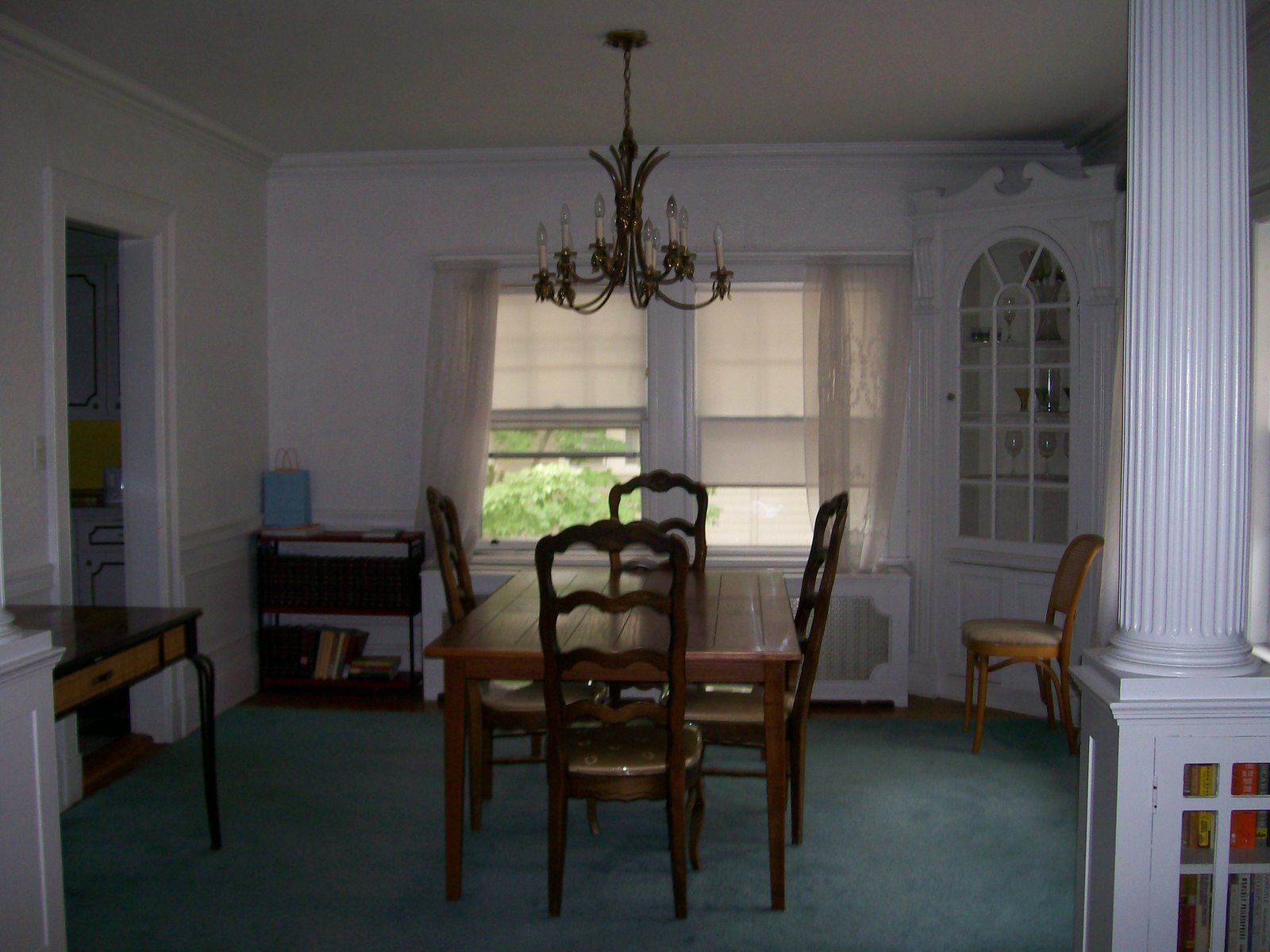In the past year and a half, I’ve started watching and enjoying How I Met Your Mother. That deserves a whole post in itself, but one of the many things I appreciate about the show is its ability to coin terms that sum up common experiences of yuppiehood—like “graduation goggles” = the nostalgic feeling you suddenly get when something you didn’t like, i.e. high school or a bad relationship, is ending, and “couples coma” = inability of long-term couples to leave their house to go out like single people.
Two weeks ago, I attended my five-year college graduation, and two terms from HIMYM kept coming to mind. One, my personal favorite, was “woo girl.”
[youtube http://www.youtube.com/watch?v=_NIAYG0-a7M]
Not going to lie—sometimes I am a woo girl, and I definitely was for all of reunion weekend.
The other was “revertigo.”
[youtube http://www.youtube.com/watch?v=3BTr0evZSis]
Because that’s what the whole weekend was—revertigo to when we were back in college.
Now, if you haven’t figured this out yet, I loved college. LOVED. To the point where I sometimes worry about coming across as one of those obnoxious people who’s obsessed with her alma mater. It took me years to stop regretting that it was over. I loved the classes, I loved the dorms, I loved the parties, I loved having all my friends in one place.
And you know what? So did everyone else in my class. I was once asked to sum up BC students in one word, and what I came up with was “enthusiastic.” Whether it’s sports, music, academic research, political activism, religion, volunteer work, or just having a good time, everyone at BC is excited about something. And everyone is excited about being there. Whenever I started telling people from work how excited I was about my college reunion, they would look at me like I was nuts. Most colleges do not have three-day reunion weekends that involve large nighttime parties and staying in dorms. But most colleges are not Boston College.
Things started for me the Wednesday before, when Christina flew in from California to stay with me for a couple of days. I had not physically seen her in almost two years, so being able to hang out with her again was amazing.
I took a day off work on Friday, and Christina and I grabbed our suitcases and hopped on the T to Chestnut Hill. We checked into the dorm, which happened to be Edmond’s Hall (the apostrophe usage is correct there—the hall is named after a guy named Edmond Walsh), where I’d lived both my sophomore and junior years. These dorms fit four people in two bedrooms and have common rooms, bathrooms, and a kitchen. We had a large group going—thirteen people in all—so while we weren’t all close together, most of us were on the same floor. Christina got lunch at Flat Bread’s, a place she went to so many times when she lived here that the owner immediately said upon seeing her, “Hey! Where’ve you been?”
Then we went to an official BC event, the lobsterbake, and caught up with some old friends who had lived on our floor in Loyola Hall freshman year. After the lobsterbake, we headed to Cleveland Circle to buy some booze and snacks for an unofficial event that night—our friend Carr’s birthday party in the dorms.
I saw people at that party whom I hadn’t seen in years. There was all kinds of what we called “nostalgic alcohol”—all the crappy stuff we used to drink. Beer like Keystone and Natty Light, and Smirnoff Ices, which was what my junior year roommates, who hadn’t yet developed a taste for most alcohol, spent the whole year drinking. We started the party with a Power Hour to a nostalgic playlist—songs from the 90s to 2006—and we reminisced about when life revolved around AIM and everyone used to put up R. Kelly as an away message: “It’s the freakin’ weekend, baby, I’m about to have me some fun.”
Around eleven, we headed down to the Edmond’s lobby, where the residential life staff (current BC students working there for the summer) was making us soak-up-the-alcohol pancakes. Yes, really—I love that they even thought of that. Later that night, I went to hang out in another room where there was a game of Kings going on and caught up with Bridget, in from DC.
And although I wasn’t there for this, Erin and Lindsey tell me that as they had just stopped talking and laid down to go to sleep that night, they suddenly heard a voice outside the window yell, “CLASS OF 06, BITCHES!” Which, along with the numerous shouts of, “Coll-EGE!” I heard over the weekend, became our catchphrase.
The next morning, I’d signed up for an alumni 5k, but, as I expected, I didn’t get up in time. So later, my friends and I headed over to another official event, a barbeque for the 5-year and 10-year reunion crowds. I saw my friends Nico and April, who were married last fall and now live on Long Island, for the first time in a long time. The food was good but I ended up with a bit of a necklace tan—awesome.
After the barbeque, Jackie and Lindsey and I decided to take a spin around campus. The dustbowl, where we used to sit under trees and read like the kids on the brochures, is sadly a thing of the past as the college starts its latest construction project.
Gasson Tower, our signature building, is looking good, though.
I bought some BC sweatpants, went to the Saturday night alumni Mass, and then headed back to Edmond’s, where Christina, Lindsey, Erin, Jackie, Bridget, and I had decided to settle the Presto’s/Pino’s debate once and for all. Presto’s and Pino’s are two New York-style pizza places a few doors down from each other in Cleveland Circle. Their pizzas are very similar, and people have been debating which one is better pretty much since they’ve existed. So we ordered one from Pino’s and one from Presto’s and decided to taste test.
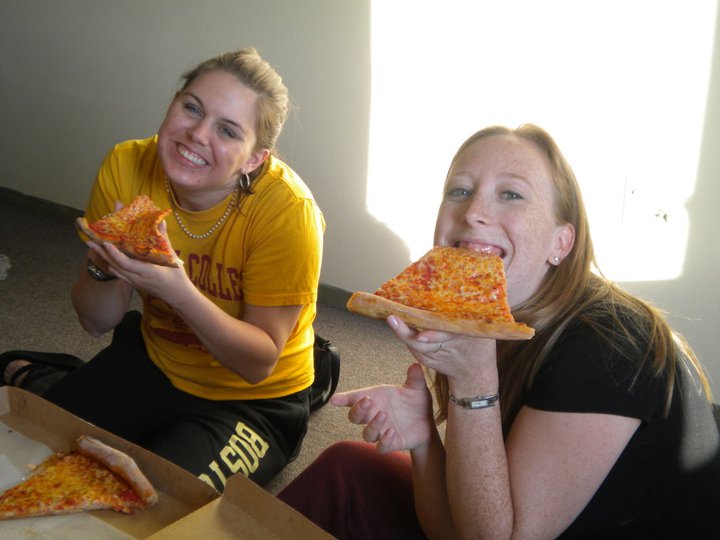
Pino’s came first, although we’d ordered from them second. Considering one notorious incident in college when Jon (absent from the reunion due to his upcoming wedding) bitched them out for taking ninety minutes and delivering the wrong order, that was pretty impressive. Presto’s also came on time, and rather than making us go to the lobby, they delivered it right to the dorm room.
In the end, Lindsey, Erin and I voted for Pino’s, Christina and Bridget voted for Presto’s, and Jackie remained undecided. So Pino’s was the narrow winner.
I don’t know what I was laughing about in that picture, but I look really happy. Even though everyone thinks of crazy parties when they think of college, some of my favorite moments involved my friends and I hanging around the dorms with takeout (freshman year, we used to discuss the meaning of life while eating Chinese), so I’m glad I got to experience that again.
Then came the weekend’s main event: the class of 2006 party in the Mods. The Mods are two-story townhouse dorms for seniors notorious for being the party dorms. (They were originally constructed as temporary housing—that was back in 1970.) If people were going to only one official event, this was it. There was a cash bar and a DJ in the Mod lot, and despite the lack of some favorites played, lots of dancing and picture-taking and having a good time.
After that, we all headed back into Edmond’s to continue the partying. Not only was Res Life serving pancakes again, but this time the BC police were helping them.
We played some Beirut like old times, and then everyone on the ninth floor dragged their kitchen tables out to the hallway so we could start a massive flip-cup game.
Yeah. Revertigo. And it was awesome.
I talked with people I hadn’t seen in a long time until four in the morning. The next day, we got up and headed to another official event, a jazz brunch. Most of the rest of the class of 2006 had decided to sleep in, so it was largely us with a bunch of people at their 30-year and 40-year reunion.
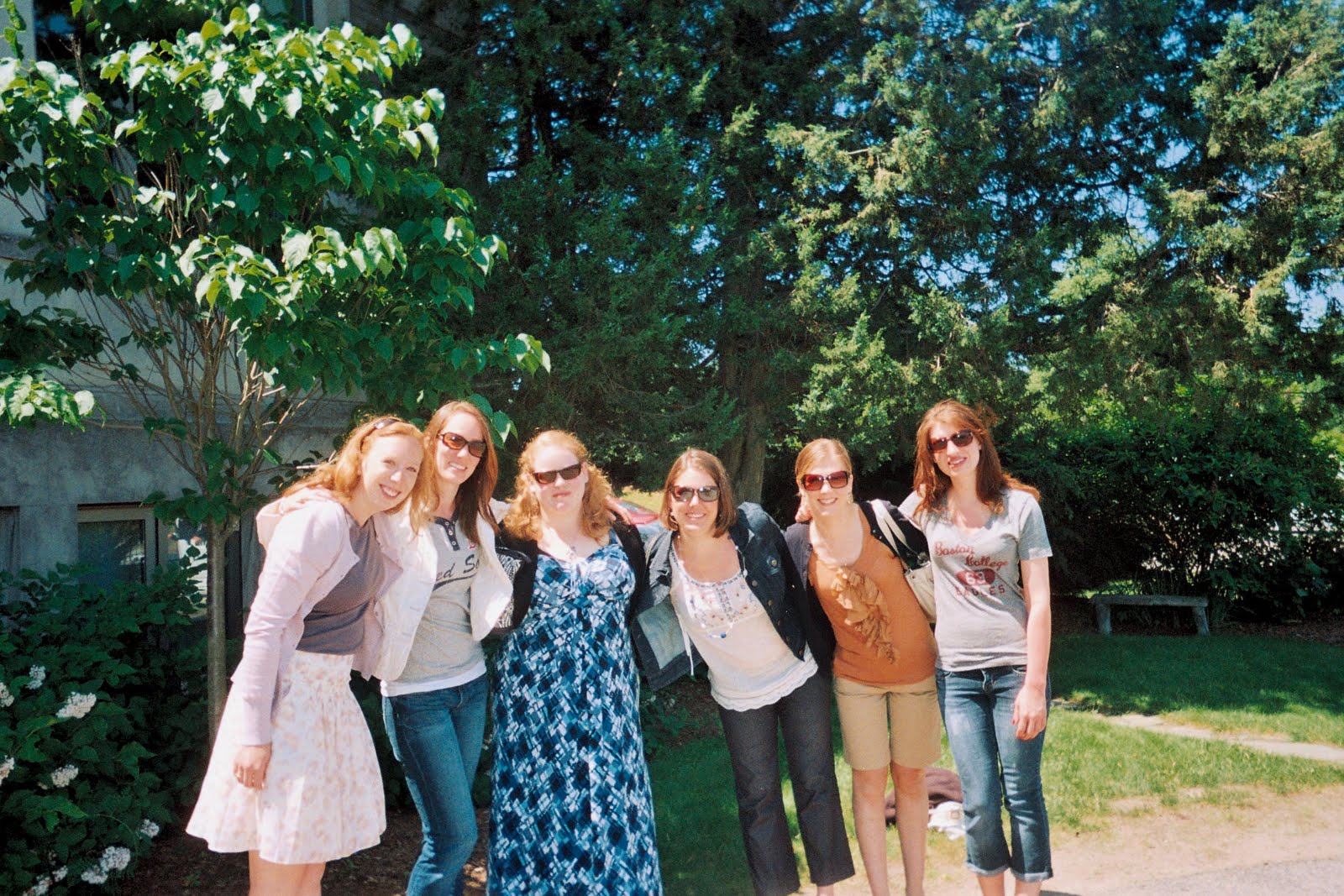
The last event, after we checked out of the dorms, was a Red Sox game against Oakland. This event had sold out quickly, so it ended up being a date for me and Erin.
Christina stayed with me for another night, headed down to Fall River for a few days to visit some of her friends there, and then came back up for a night to have dinner with Julie and me and then catch her flight home.
It was seriously one of the best weekends of my life, and even with all these details, I feel like it’s hard for me to convey just how awesome it was. And the thing is, it was an entirely mutual feeling—EVERYONE had a great time. EVERYONE was smiling and getting into everything. EVERYONE came away wishing they could go back to college, as we’d just squeezed all of the best parts of it into one weekend. I guess that’s just the enthusiasm that BC students are known for.
